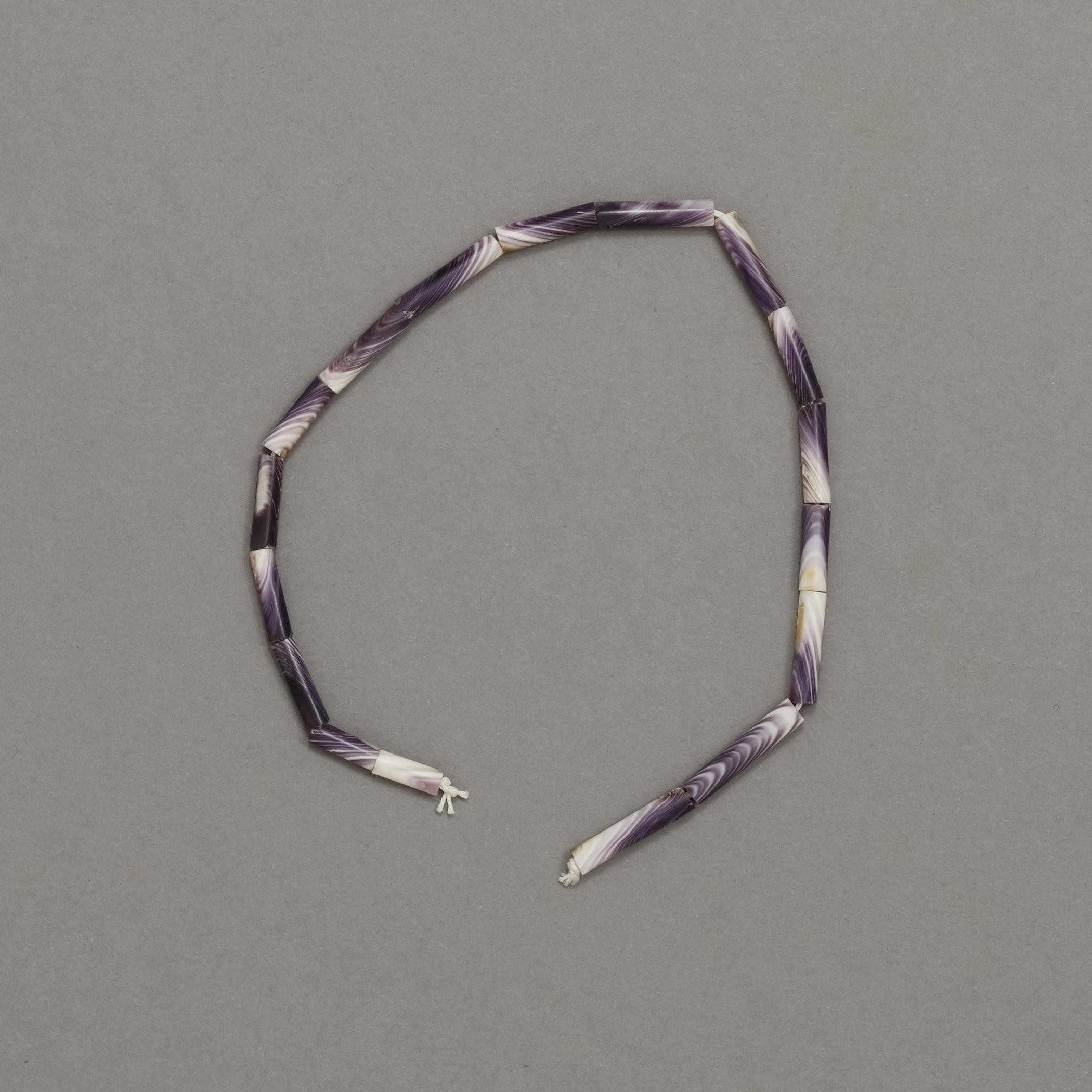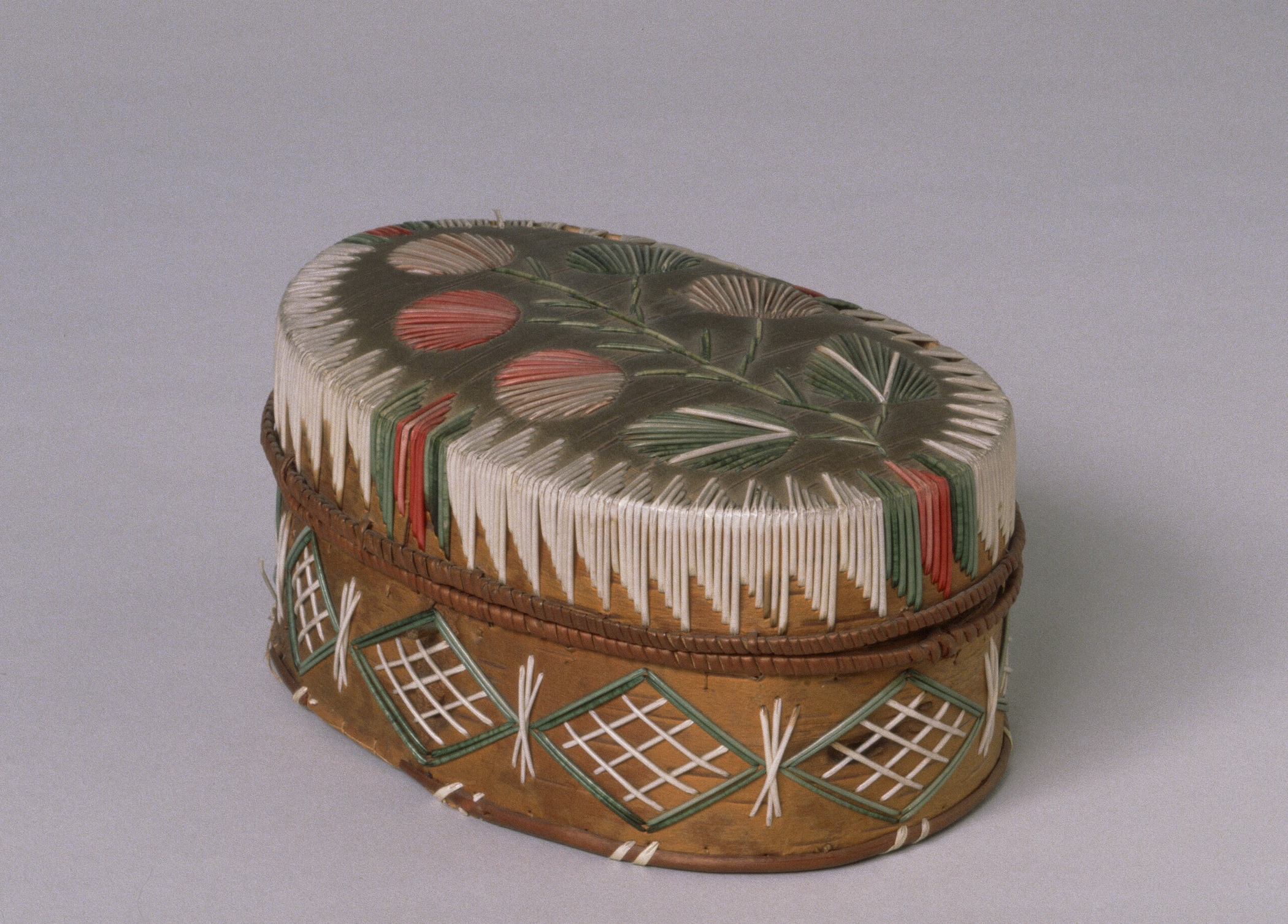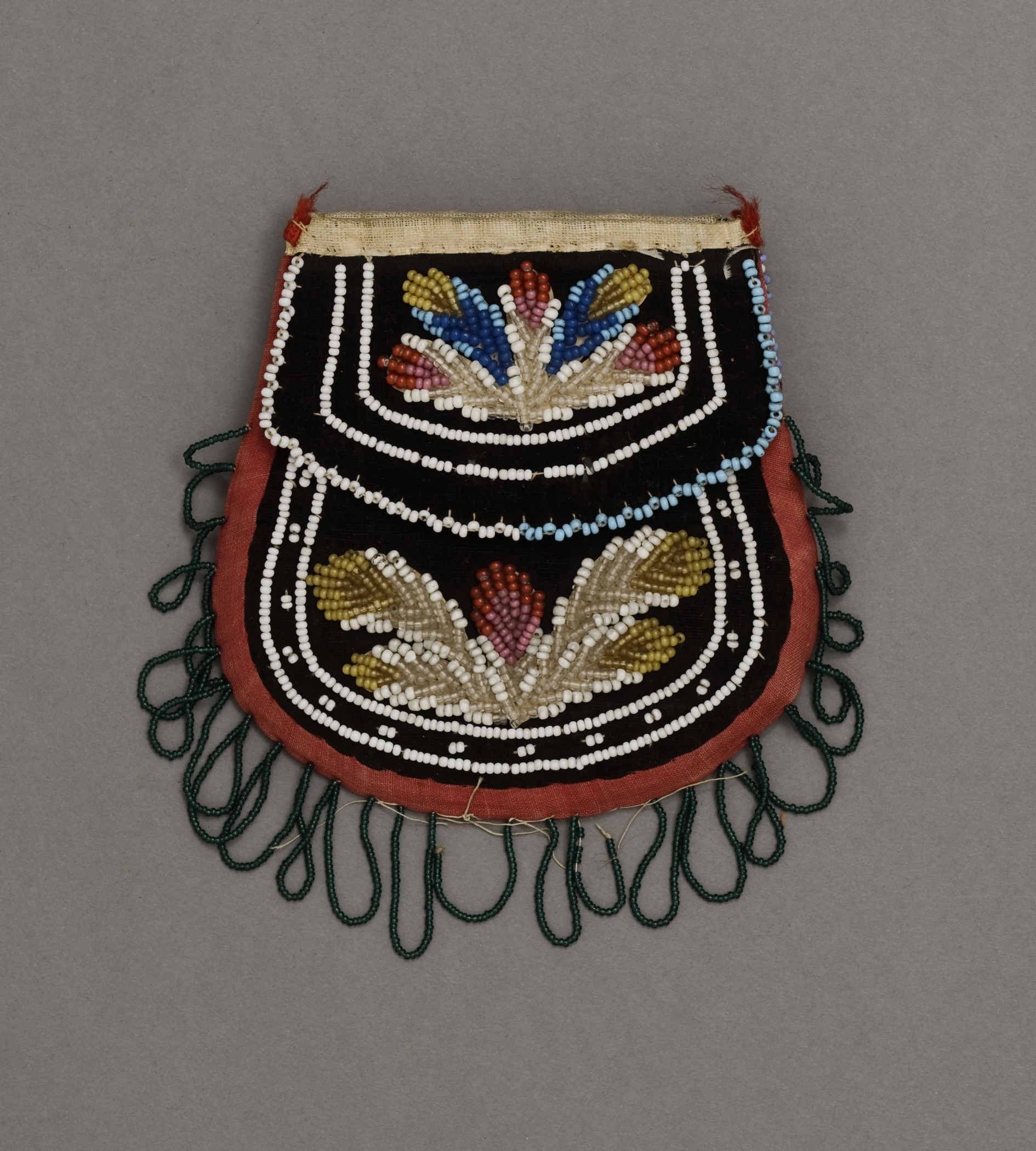Haudenosaunee (Iroquois)
Beaded bag
- 1860s
- Velvet, cloth, and glass beads
- 5 1/16 × 5 3/16 in.
Hood Museum of Art, Dartmouth College: Bequest of Frank C. and Clara G. Churchill, 46.17.10194
visibilityLook & discussThe period 1837–1901 is known as the Victorian era, named for the reigning Queen Victoria of England. It was a time of great prosperity for upper class Europeans and Americans. Victorian households were filled with fancy furniture and knickknacks. Women wore long, elaborate dresses and tight corsets, and carried their belongings in small, beautifully embroidered handbags.
During this time, Haudenosaunee women created fancy beaded bags for tourists visiting Niagara Falls and other tourist destinations. These bags were influenced by and influenced European floral design of the period. The sale of these bags helped to support many Indian families during the 1800s.
explore the object
The natural resources native people relied upon before the arrival of Europeans required an intimate knowledge of the land. It was hard work to acquire these materials and then process them for use and consumption. Europeans brought with them many desirable items for trade, including fabric, steel needles, and cotton thread. These items were easier to use than natural materials, and allowed for a new range of creative expression. Like people everywhere, native people adopted new technologies and incorporated them into traditional practice.
This was especially true for glass beads. Pre-contact, native people had used shells and porcupine quills to embellish clothing and containers. Glass beads came in different shapes and sizes and possessed an intensity of color that was not available before.
Haudenosaunee women began to use glass beads for their own regalia, or ceremonial clothing, as well as on items for sale. They combined centuries-old designs of flowers and leaves (see moccasins and bandolier bags for examples) with new designs from European carpets, tablecloths, embroidery, and other textiles. The glass beads were either strung together and tacked onto the surface of the fabric every 3 to 4 beads (spot stitching) or sewn into place individually.
Haundenosaunee purses are often recognizable because of the alternating lines of bead embroidery in different tones of the same color. For example, in this purse we see dark pink and light pink, dark blue and light blue, and clear and opaque white and yellow.




